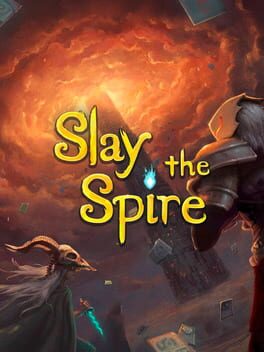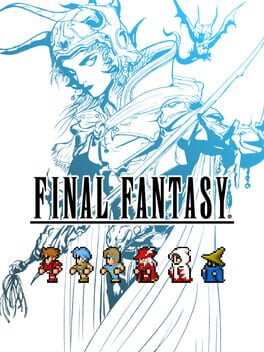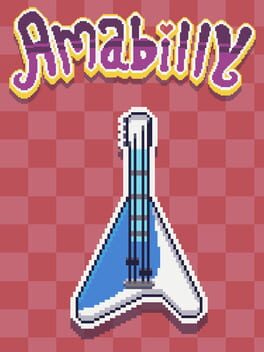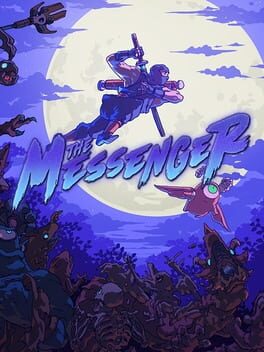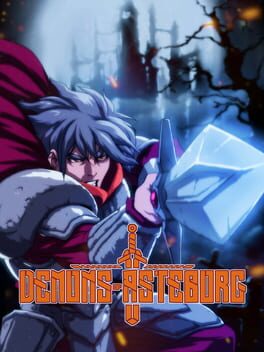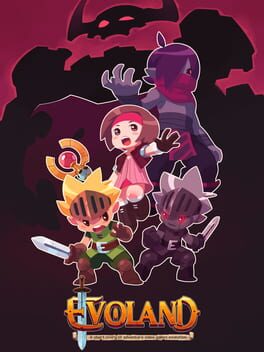AlexTheGerman
2023
As the original Super Mario RPG was never released in Europe, I was one of those unhappy few who only learned about this game in the pages of the German Club Nintendo magazine. Now, almost 30 years later, my story with this game has finally come full circle.
Pros:
+ the graphic presentation has been faithfully and beautifully updated
+ characters are animated with lots of lovingly detail
+ newly added cutscenes are creative and charming
+ the writing is funny and irreverant throughout
+ the premise does not follow the usual chlichés of Mario games
+ the action combat system is timeless
+ every weapon type and special attack has its own action window
+ RPG elements are straight to the point and newcomer-friendly
+ party members can be swapped on the fly during battles
+ available party roster is singular in Mario games
+ enemies are visible on the map and can be avoided
+ items are actually useful and can greatly affect battles
+ fast travel is extensive and available from the menu
+ a lot of secret areas, items and gameplay features to uncover
+ post-game bosses are tough and require unique strategies
+ the music tracks have been caringly remastered...
Cons:
- ... but there are not specific boss or enemy themes
- the general difficulty is far too low
- not all party members meaningfully take part in the story
- how to progress is not always apparent, even with a hint character available
- characters will have learned all their special moves by the mid-way point
- not all characters have a full range of special attacks
- flaws in the combat logic: sleeping characters can defend...
- ...and splash damage seems to be randomized
- the combo counter is reset even while using the defend move
- items cannot be used from the options menu
- mini games are a bit too frequent and differ widely in quality
- dialogue scenes tend to drag on a bit
- even with the appropriate accessoir, finding hidden treasure is tedious
- the antagonist is mostly absent from the story...
- ...and the final fight is a real disappointment
- the technical performance takes a toll in more populated areas
Playtime: 20 hours with 99% completion, all optional bosses beaten and items acquired. That one percent is missing because I have zero interest in collecting the entire bestiary for a meaningless statistic.
Magic Moments: The "make Mario jump" running gag. Finding the Yoshi island and various easter eggs. The musical references to that one Square franchise in one specific boss fight.
Blagic Moment: Having to redo one of the complex, optional boss fights because of a few missed action commands towards the end.
Verdict:
Super Mario RPG is a strange yet fascinating RPG that, while having been updated in various ways for its current release, still feels idiosynchratic in lots of different ways. The non-existent storyline puts together an unlikely character roster that has Bowser and Mario fighting on the same side. The action combat system, while intuitive and engaging, renders most of the early, more difficult fights hectic and the uneven difficulty curve turns the later halve into a cake walk. The mini-games oscilate between tedious and simply unfun, and the pacing suffers as a consequence.
But despite these criticisms, the series' usual charm is all here, with a script that is frequently self-effacing and a beatifully presented world that holds many secrets to explore, and finally experiencing the roots of this particular genre of Mario games is a worthwhile endeavor that I would recommend.
Pros:
+ the graphic presentation has been faithfully and beautifully updated
+ characters are animated with lots of lovingly detail
+ newly added cutscenes are creative and charming
+ the writing is funny and irreverant throughout
+ the premise does not follow the usual chlichés of Mario games
+ the action combat system is timeless
+ every weapon type and special attack has its own action window
+ RPG elements are straight to the point and newcomer-friendly
+ party members can be swapped on the fly during battles
+ available party roster is singular in Mario games
+ enemies are visible on the map and can be avoided
+ items are actually useful and can greatly affect battles
+ fast travel is extensive and available from the menu
+ a lot of secret areas, items and gameplay features to uncover
+ post-game bosses are tough and require unique strategies
+ the music tracks have been caringly remastered...
Cons:
- ... but there are not specific boss or enemy themes
- the general difficulty is far too low
- not all party members meaningfully take part in the story
- how to progress is not always apparent, even with a hint character available
- characters will have learned all their special moves by the mid-way point
- not all characters have a full range of special attacks
- flaws in the combat logic: sleeping characters can defend...
- ...and splash damage seems to be randomized
- the combo counter is reset even while using the defend move
- items cannot be used from the options menu
- mini games are a bit too frequent and differ widely in quality
- dialogue scenes tend to drag on a bit
- even with the appropriate accessoir, finding hidden treasure is tedious
- the antagonist is mostly absent from the story...
- ...and the final fight is a real disappointment
- the technical performance takes a toll in more populated areas
Playtime: 20 hours with 99% completion, all optional bosses beaten and items acquired. That one percent is missing because I have zero interest in collecting the entire bestiary for a meaningless statistic.
Magic Moments: The "make Mario jump" running gag. Finding the Yoshi island and various easter eggs. The musical references to that one Square franchise in one specific boss fight.
Blagic Moment: Having to redo one of the complex, optional boss fights because of a few missed action commands towards the end.
Verdict:
Super Mario RPG is a strange yet fascinating RPG that, while having been updated in various ways for its current release, still feels idiosynchratic in lots of different ways. The non-existent storyline puts together an unlikely character roster that has Bowser and Mario fighting on the same side. The action combat system, while intuitive and engaging, renders most of the early, more difficult fights hectic and the uneven difficulty curve turns the later halve into a cake walk. The mini-games oscilate between tedious and simply unfun, and the pacing suffers as a consequence.
But despite these criticisms, the series' usual charm is all here, with a script that is frequently self-effacing and a beatifully presented world that holds many secrets to explore, and finally experiencing the roots of this particular genre of Mario games is a worthwhile endeavor that I would recommend.
2019
Pros:
+ the progenitor of the modern deck builder roguelike
+ addictive gameplay loop of risk and reward
+ card based system allows for building infinitely novel decks and strategies
+ systems and interactions are quick to learn but hard to master
+ energy system is an inspired choice for the combat design
+ map generation system usually creates a number of viable routes
+ bosses of each floor are visible from the beginning and allow for preparation
+ information on the map and all card piles are available at any moment
+ the four chracters play entirely differently and have their own decks
+ unlockable cards and reclics are motivating elements
+ card interactions are visually emphasized
+ relics and potions can modify all elements of gameplay
+ event rooms are always interesting and rich in variety
+ one event room in particular allows interactions between runs
+ requisites needed to unlock the final boss are smartly implemented
+ trophies are used to imply different ways of playing
+ enemy behavior is not entirely random, making preparation for fights possible
+ relation between randomness and strategical action is smartly designed ...
Cons:
- ... but the general difficulty is frustratingly high throughout
- low-quality watercolor graphics and enemy designs lack polish
- animations and the visual impact of cards on enemies are either non-existent or subpar
- runs can suddenly end because of a lost coin flip
- one relic draw can make or break a run
- some boss relics are useless and make winning effectively impossible
- relics and potions cannot be sold, relics cannot be discarded
- keeping track of relic effects often gets too complex and confusing
- upgrading cards is often not all that effective
- due to enemies' damage increase, fights are effectively on a timer
- some enemies can use two actions in a single turn
- small mistakes at the beginning can cascade to unwinnable boss fight
- unlocking the final boss is time consuming and artificially extends the playtime
- not all characters are equally effective in defeating specific challenges
- at over 70-80 minutes, runs often feel too long
- glitches in internal logic: relic attacks don't trigger proper enemy response (see birds in Act 2)
- technical performance is choopy, including frequent slowdowns when using or getting certain cards
- the music is not made for hours of playing at a time, but you will probably turn it off anyway
Magic Moment: Using a potion to use an attack card twice and just obliterating a tough enemy in a single turn.
Best Character: The Watcher, the tactical options provided by the stance system are rich and satisfying.
Playtime: More than I would like to admit, beat the full game at base difficulty with 2 out of 4 characters.
Verdict:
Slay the Spire is without doubt a phenomenon. As perhaps the first major deck builder roguelike, the team practically invented the card based combat system that countless others have copied since the game's release in 2019. The different decks for the four characters allow for an astronomical amount of combat strategies and interactions, and the makers managed to create the feeling of being in control of the action despite the inherent randomness of a card based system. Still, even when the "one more run" loop kicks in, the generally brutal difficulty of Slay the Spire and the constant influence of the butterfly effect leads to a lot of frustration and wasted runs that are also too much dependent on relics and specific potions.
Sure, some copycats might have improved on the design of Slay the Spire and especially on its subpar presentation, but cannot go wrong with the granddaddy of the genre and should absolutely play this if you want something to consume your life for a few weeks. Still, you should absolutely stop when you are not having fun anymore, and one playthrough is certainly enough.
+ the progenitor of the modern deck builder roguelike
+ addictive gameplay loop of risk and reward
+ card based system allows for building infinitely novel decks and strategies
+ systems and interactions are quick to learn but hard to master
+ energy system is an inspired choice for the combat design
+ map generation system usually creates a number of viable routes
+ bosses of each floor are visible from the beginning and allow for preparation
+ information on the map and all card piles are available at any moment
+ the four chracters play entirely differently and have their own decks
+ unlockable cards and reclics are motivating elements
+ card interactions are visually emphasized
+ relics and potions can modify all elements of gameplay
+ event rooms are always interesting and rich in variety
+ one event room in particular allows interactions between runs
+ requisites needed to unlock the final boss are smartly implemented
+ trophies are used to imply different ways of playing
+ enemy behavior is not entirely random, making preparation for fights possible
+ relation between randomness and strategical action is smartly designed ...
Cons:
- ... but the general difficulty is frustratingly high throughout
- low-quality watercolor graphics and enemy designs lack polish
- animations and the visual impact of cards on enemies are either non-existent or subpar
- runs can suddenly end because of a lost coin flip
- one relic draw can make or break a run
- some boss relics are useless and make winning effectively impossible
- relics and potions cannot be sold, relics cannot be discarded
- keeping track of relic effects often gets too complex and confusing
- upgrading cards is often not all that effective
- due to enemies' damage increase, fights are effectively on a timer
- some enemies can use two actions in a single turn
- small mistakes at the beginning can cascade to unwinnable boss fight
- unlocking the final boss is time consuming and artificially extends the playtime
- not all characters are equally effective in defeating specific challenges
- at over 70-80 minutes, runs often feel too long
- glitches in internal logic: relic attacks don't trigger proper enemy response (see birds in Act 2)
- technical performance is choopy, including frequent slowdowns when using or getting certain cards
- the music is not made for hours of playing at a time, but you will probably turn it off anyway
Magic Moment: Using a potion to use an attack card twice and just obliterating a tough enemy in a single turn.
Best Character: The Watcher, the tactical options provided by the stance system are rich and satisfying.
Playtime: More than I would like to admit, beat the full game at base difficulty with 2 out of 4 characters.
Verdict:
Slay the Spire is without doubt a phenomenon. As perhaps the first major deck builder roguelike, the team practically invented the card based combat system that countless others have copied since the game's release in 2019. The different decks for the four characters allow for an astronomical amount of combat strategies and interactions, and the makers managed to create the feeling of being in control of the action despite the inherent randomness of a card based system. Still, even when the "one more run" loop kicks in, the generally brutal difficulty of Slay the Spire and the constant influence of the butterfly effect leads to a lot of frustration and wasted runs that are also too much dependent on relics and specific potions.
Sure, some copycats might have improved on the design of Slay the Spire and especially on its subpar presentation, but cannot go wrong with the granddaddy of the genre and should absolutely play this if you want something to consume your life for a few weeks. Still, you should absolutely stop when you are not having fun anymore, and one playthrough is certainly enough.
2021
Pros:
- A genre milestone with lots of historic value
- Lovingly recreated in the Pixel Remaster versions with great soundtrack and visuals (except for the font and weird screen tearing)
- A map and autosave function that will eliminate most of the frustration
Cons:
- Has aged incredibly badly (even with the bug fixes and modern improvements)
- Barebone, unbalanced combat system with no strategic finesse and often random outcomes
- Awful dungeon designs that punish wrong decisions with more grinding
- Weak story with even weaker dialogue
- Useless classes and faceless avatars
- Laughable pacing that lets you traverse directionless by boat after roughly the first half hour
Magic Moment: When you realize that the entire series started as a DnD game with dwarves. Oh, and the first boat ride!
Verdict: Play for the historic value if you have a little time to spare. Don't replay.
- A genre milestone with lots of historic value
- Lovingly recreated in the Pixel Remaster versions with great soundtrack and visuals (except for the font and weird screen tearing)
- A map and autosave function that will eliminate most of the frustration
Cons:
- Has aged incredibly badly (even with the bug fixes and modern improvements)
- Barebone, unbalanced combat system with no strategic finesse and often random outcomes
- Awful dungeon designs that punish wrong decisions with more grinding
- Weak story with even weaker dialogue
- Useless classes and faceless avatars
- Laughable pacing that lets you traverse directionless by boat after roughly the first half hour
Magic Moment: When you realize that the entire series started as a DnD game with dwarves. Oh, and the first boat ride!
Verdict: Play for the historic value if you have a little time to spare. Don't replay.
2023
A cute little indie game starring a girl playing a Flying V electric guitar so obscure that it does not even have an entry on howlongtobeat? Talk about my jam!
Pros:
+ the world is colourful and lovingly created
+ the female main character kills with a Flying V
+ except for the balloon upgrade, the controls are tight
+ the ingame currency is found plentiful in each level
+ health can be easily replenished
+ level design does a lot with very few elements
+ upgrades feel meaningful and liven up the combat
Cons:
- the heavy metal tracks feel misplaced
- boss designs are a bit broken and simplistic
- one-hit traps are frustrating
- levels do not hide collectables well
- there is no final boss that requires the entire toolset
Playtime: 1 hour and 30 minutes with 101% completion.
Magic Moment: Getting the spread shot and spreading sick riffs throughout the land.
Verdict:
Amabilly does exactly what the team at were likely aiming for: it provides a, quick, snappy side-scrolling action game without bells and whistles, that is plain fun for what it is. Still, it is disappointing that despite the premise, the music plays only a tiny role and really has no bearing on the core design.
However, if you like the art style or feel a knack for a tinge of nostalgia for the 8 and 16-bit era of these kinds of games, you can do much worse than with Amabilly.
Pros:
+ the world is colourful and lovingly created
+ the female main character kills with a Flying V
+ except for the balloon upgrade, the controls are tight
+ the ingame currency is found plentiful in each level
+ health can be easily replenished
+ level design does a lot with very few elements
+ upgrades feel meaningful and liven up the combat
Cons:
- the heavy metal tracks feel misplaced
- boss designs are a bit broken and simplistic
- one-hit traps are frustrating
- levels do not hide collectables well
- there is no final boss that requires the entire toolset
Playtime: 1 hour and 30 minutes with 101% completion.
Magic Moment: Getting the spread shot and spreading sick riffs throughout the land.
Verdict:
Amabilly does exactly what the team at were likely aiming for: it provides a, quick, snappy side-scrolling action game without bells and whistles, that is plain fun for what it is. Still, it is disappointing that despite the premise, the music plays only a tiny role and really has no bearing on the core design.
However, if you like the art style or feel a knack for a tinge of nostalgia for the 8 and 16-bit era of these kinds of games, you can do much worse than with Amabilly.
2018
A good game with major flaws. The controls and look are perfect. The first part is much better than the second. The backtracking due to the missing fast travel system is exhausting. The soundtrack gets grating after a while. The dialogue is perhaps a bit too smart for its own good.
Play it, but don't replay it.
Play it, but don't replay it.
Pros:
+ a competent homage to classic 2D Zeldas
+ Lily is a memorable protagonist
+ colorful art style and impressive particle effects
+ a large overworld with lots of optional challenges
+ combat is snappy and satisfying
+ progress and pacing are swift and concise
+ difficulty curve is moderate enough
+ movement speed is quick enough
+ writing is quiant and flowery
+ meta-narrative elements offer surprising options...
Cons:
- ...but sadly appear to rarely
- item management is a bit cumbersome
- most NPCs have nothing interesting to say
- health replenishment system is a bit wonky
- the general design doesn't evolve much from the Zelda formula
- very little post-game content
Magic Moment: Chosing what enemies to fight on the overworld for the first time.
Playtime: 9 hours with most of the map explored and 13 hearts collected.
Verdict:
Blossom Tales is a competently made homage to the classic 2D Zeldas. It emulates the combat, overworld design, and exploratory nature of its forbearers well, but offers little in terms of innovation. While the meta-narrative is a unique twist, the different routes offered in specific situations only rarely affect the gameplay. Still, the colorful art style and flowery writing help in giving the game a distinct identity, and anyone interested in re-exploring the concise, streamlined action adventures of the 16-bit era will find plenty to enjoy here.
Play it and then play the sequel.
+ a competent homage to classic 2D Zeldas
+ Lily is a memorable protagonist
+ colorful art style and impressive particle effects
+ a large overworld with lots of optional challenges
+ combat is snappy and satisfying
+ progress and pacing are swift and concise
+ difficulty curve is moderate enough
+ movement speed is quick enough
+ writing is quiant and flowery
+ meta-narrative elements offer surprising options...
Cons:
- ...but sadly appear to rarely
- item management is a bit cumbersome
- most NPCs have nothing interesting to say
- health replenishment system is a bit wonky
- the general design doesn't evolve much from the Zelda formula
- very little post-game content
Magic Moment: Chosing what enemies to fight on the overworld for the first time.
Playtime: 9 hours with most of the map explored and 13 hearts collected.
Verdict:
Blossom Tales is a competently made homage to the classic 2D Zeldas. It emulates the combat, overworld design, and exploratory nature of its forbearers well, but offers little in terms of innovation. While the meta-narrative is a unique twist, the different routes offered in specific situations only rarely affect the gameplay. Still, the colorful art style and flowery writing help in giving the game a distinct identity, and anyone interested in re-exploring the concise, streamlined action adventures of the 16-bit era will find plenty to enjoy here.
Play it and then play the sequel.
2020
Pros:
- Cute, unique art style and character design
Cons:
- No narrative elements
- No functional tutorial
- No quick restart from menu
- Sound effects cannot be turned completely off
- Barely functional double jump mechanics
- Inconsistent level design
- Checkpoints don't save collectibles
- High difficulty with very little playoff
Manic Moment: Level 9 starts with a challenge that is impossible to overcome if you don't understand an important mechanic that the game never teaches.
Verdict: A hyper-difficult platformer with nice visuals but very little polish and quality. Don't play, especially when there are so many better competitors.
- Cute, unique art style and character design
Cons:
- No narrative elements
- No functional tutorial
- No quick restart from menu
- Sound effects cannot be turned completely off
- Barely functional double jump mechanics
- Inconsistent level design
- Checkpoints don't save collectibles
- High difficulty with very little playoff
Manic Moment: Level 9 starts with a challenge that is impossible to overcome if you don't understand an important mechanic that the game never teaches.
Verdict: A hyper-difficult platformer with nice visuals but very little polish and quality. Don't play, especially when there are so many better competitors.
2021
Pros:
+ a reverent, respectful throwback to the 16-bit days
+ art style and animation are impressive throughout
+ backgrounds are detailed and the parallax scrolling is great
+ the difficulty is generally high but rarely unfair
+ plenty of checkpoints prevent frustration
+ stages are varied and offer surprises at every turn
+ slide move is implemented well and offers I-frames
+ collectable items shake up the gameplay in various ways
+ magic replenishes on its own
+ bosses have specific weaknesses tailored to specific weapons
+ the final stage is a real surprise and extends the combat options
+ the story can be quickly skipped
Cons:
- extra lifebar cannot be replenished
- enemies frequently appear out of nowhere
- stage-specific items do not carry over
- jumping challenges tend towards the unfair
- store items are too expensive
- combat upgrades are not worth the money
- health pickups are randomly dropped by enemies
- magic pickups are practically useless
- music is merely okay
Magic Moment: Researching the original release date on the Sega Genesis and realizing that this is in fact a new release. It was designed for the original hardware and seems to work fine on the Genesis, which is amazing.
Playtime: 6 hours on normal difficulty without seeing a Game Over screen, which seems to place me on the slower side.
Verdict:
You will know if you like this after a few seconds of footage or a screenshot in the gaming magazine of your choice (as long as those even still exist), just like in the good old days of the early 90s. With a great presentation, tight combat mechanics, a steep but rarely unfair difficulty curve, and surprising boss encounters, Demons of Asteborg will satisfy any fan of old-school 2D platformers, and the creator's reverence for the genre is felt at every new platforming challenge. Still, the game offers nothing new compared to its peers from yesteryear, and the health and magic management system could have used a serious overhaul.
Take a look at it if you are over 30 years old and crave a nostalgic trip to the past, because they truly do not make these anymore, but do not expect a reinvention of the genre. Newcomers and players with a short temper should be prepared for a serious ass kicking.
+ a reverent, respectful throwback to the 16-bit days
+ art style and animation are impressive throughout
+ backgrounds are detailed and the parallax scrolling is great
+ the difficulty is generally high but rarely unfair
+ plenty of checkpoints prevent frustration
+ stages are varied and offer surprises at every turn
+ slide move is implemented well and offers I-frames
+ collectable items shake up the gameplay in various ways
+ magic replenishes on its own
+ bosses have specific weaknesses tailored to specific weapons
+ the final stage is a real surprise and extends the combat options
+ the story can be quickly skipped
Cons:
- extra lifebar cannot be replenished
- enemies frequently appear out of nowhere
- stage-specific items do not carry over
- jumping challenges tend towards the unfair
- store items are too expensive
- combat upgrades are not worth the money
- health pickups are randomly dropped by enemies
- magic pickups are practically useless
- music is merely okay
Magic Moment: Researching the original release date on the Sega Genesis and realizing that this is in fact a new release. It was designed for the original hardware and seems to work fine on the Genesis, which is amazing.
Playtime: 6 hours on normal difficulty without seeing a Game Over screen, which seems to place me on the slower side.
Verdict:
You will know if you like this after a few seconds of footage or a screenshot in the gaming magazine of your choice (as long as those even still exist), just like in the good old days of the early 90s. With a great presentation, tight combat mechanics, a steep but rarely unfair difficulty curve, and surprising boss encounters, Demons of Asteborg will satisfy any fan of old-school 2D platformers, and the creator's reverence for the genre is felt at every new platforming challenge. Still, the game offers nothing new compared to its peers from yesteryear, and the health and magic management system could have used a serious overhaul.
Take a look at it if you are over 30 years old and crave a nostalgic trip to the past, because they truly do not make these anymore, but do not expect a reinvention of the genre. Newcomers and players with a short temper should be prepared for a serious ass kicking.
2013
What started as an entry into the venerable Ludum Dare contest turned into a nice and sweet, if somewhat slight manifestation of the idea of playing through the history of a genre in a single game.
Pros:
+ cute central idea that pays tribute to the RPG genre
+ chests serving more gameplay options is a good idea
+ controls and action sequences in 2D work well enough
+ music and sound effects feature classic 2D RPG styles
+ the card game is fun (and stolen from FF8)
Cons:
- the 3D gameplay is rough and unpolished
- collectibles do not serve any function
- the plot is as barebones as they come
- the final boss is terrible and badly designed
Playtime: 2 hours, with only a few collectibles acquired. Played as part of the Evoland Legendary Edition.
Magic Moments: The first change in perspective. Playing the card game and recognizing it from somewhere.
Verdict:
Even though the final 3D gameplay falls short compared to the early sequences, Evoland is clearly a labour of love. As part of the Legendary Edition, this is a recommended for fans of the modern RPG. However, players that are not interested in the history of the genre and do not care about reliving it in a quick play session can safely skip this.
Pros:
+ cute central idea that pays tribute to the RPG genre
+ chests serving more gameplay options is a good idea
+ controls and action sequences in 2D work well enough
+ music and sound effects feature classic 2D RPG styles
+ the card game is fun (and stolen from FF8)
Cons:
- the 3D gameplay is rough and unpolished
- collectibles do not serve any function
- the plot is as barebones as they come
- the final boss is terrible and badly designed
Playtime: 2 hours, with only a few collectibles acquired. Played as part of the Evoland Legendary Edition.
Magic Moments: The first change in perspective. Playing the card game and recognizing it from somewhere.
Verdict:
Even though the final 3D gameplay falls short compared to the early sequences, Evoland is clearly a labour of love. As part of the Legendary Edition, this is a recommended for fans of the modern RPG. However, players that are not interested in the history of the genre and do not care about reliving it in a quick play session can safely skip this.

